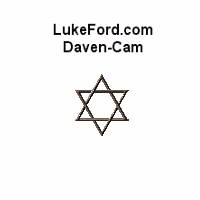Author Hillel Halkin, reviewing the Koren Sacks Siddur in the spring 2010 Jewish Review of Books, recounts a charming story that he heard from his father:
“My father, who prayed with great kavanah [concentration] yet was adamant about having no religious beliefs whatsoever … once told me a story about a man standing in the street outside a shtibl, a little synagogue, looking for a tseynter, a 10th Jew to add to the nine waiting inside to say the afternoon prayer. Spotting a likely looking candidate, he asks: ‘Excuse me, mister. Are you Jewish?’ ‘Yes, I am,’ says the Jew. ‘What can I do for you?’ ‘You can join a minyan for Mincha,’ the man says. ‘I’m afraid that’s impossible,’ answers the Jew. ‘Why?’ asks the man. ‘Because I’m an atheist,’ says the Jew. The man gives the Jew a withering look. ‘And where,’ he inquires, ‘is it written that an atheist doesn’t have to say Mincha?’ ”
For Judaism, the best way to pray is with a minyan. Halkin notes, “Praying in a minyan is different from praying alone, less because of the additional prayers said by the worshipers than because of the human solidarity established among them.”
The human solidarity that the minyan offers is a mirror image of what the Jewish community is all about. In Jewish tradition, recited in the Shabbat Musaf service, those who “faithfully occupy themselves with the needs of the community” are the ones who are blessed. Likewise, those who dismantle the community structure are denounced in the harshest of words.
Luke says: When human solidarity was denied me, I found great solace from my daven cam.

